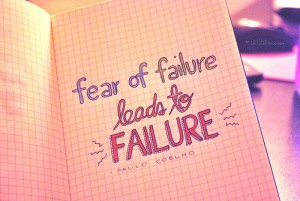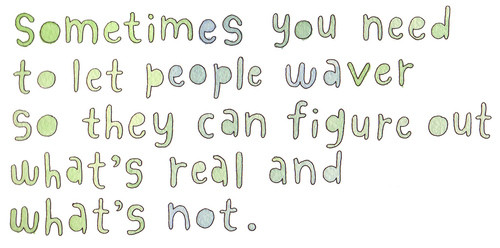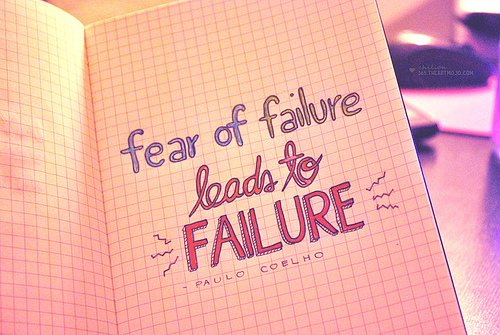A guest post by Mary Fifield
The power of learning is not just a slogan for many of us working in the non-profit sector. It’s the value that undergirds the programs that we help deliver—programs designed to support people in discovering their own talents and skills to better their well-being, their environment, and their society. It’s a value that supports our own growth as professionals.
 Internally, many organizations take learning seriously as well. Few dispute that learning from our failures, even more than our successes, helps us determine how we can be more effective. But often those valuable lessons stay sealed within the organization, rather than being shared with donors where they could make a much greater impact. No one wants to jeopardize their funding by giving donors the impression their projects are not achieving the anticipated results.
Internally, many organizations take learning seriously as well. Few dispute that learning from our failures, even more than our successes, helps us determine how we can be more effective. But often those valuable lessons stay sealed within the organization, rather than being shared with donors where they could make a much greater impact. No one wants to jeopardize their funding by giving donors the impression their projects are not achieving the anticipated results.
We struggled with this on various occasions when I worked with Amazon Partnerships Foundation (APF). Our local foundation developed a methodology through which communities propose projects to us, rather than us “bringing” projects to communities. In the project solicitation phase, we facilitate workshops for interested communities in how to craft a simple proposal for presentation to our board. For winning projects, we provide a small grant and a year of intensive project management training so community members learn to implement their ideas and own their efforts.
In one particular community that proposed installing household rainwater catchment systems, we saw warning signs from the beginning. During the solicitation phase, some families didn’t show up to the planning meeting to which they were invited, and then accused the rest of excluding them from the project. Later, the project was beset by low attendance at meetings, requests that we purchase t-shirts to help “promote APF” with community members, and a lack of simple maintenance for the rainwater systems.
Having learned from previous failures, we’d developed tools to alleviate these problems, but they didn’t work this time. As we suspected when our board approved their proposal, the community wasn’t sufficiently organized or committed to the project.
 So why did we accept their proposal? Under normal circumstances, we would have explained why we couldn’t accept it and invited the community to apply in the future. But we had received money from a funder who was primarily interested in us reporting that 57 rainwater catchment systems be installed within a twelve-month period. The proposals we received during that solicitation phase weren’t as strong as in previous or subsequent years, but unfortunately we didn’t have the luxury of time to extend our search for other communities.
So why did we accept their proposal? Under normal circumstances, we would have explained why we couldn’t accept it and invited the community to apply in the future. But we had received money from a funder who was primarily interested in us reporting that 57 rainwater catchment systems be installed within a twelve-month period. The proposals we received during that solicitation phase weren’t as strong as in previous or subsequent years, but unfortunately we didn’t have the luxury of time to extend our search for other communities.
While we did eventually hit the goal of 57 water systems installed, we failed to achieve our real goal—that the community learn enough about project design and implementation so they could prioritize and carry out other projects in the future.
Everyone missed an opportunity because of a false assumption that results only count if they meet or exceed our expectations. But what if we could change that paradigm? Imagine if we could have open conversations with donors—from college students that give $25 online through a campus challenge to the Gates Foundation—about failure and lessons learned. What could we do?
For starters we could make investments go further. Beyond providing immediate program support, donations would actually help organizations improve their approach and experiment with new ideas, which would create greater long-term and cumulative impact. Based on my experience, I’m convinced that the critical mass that donors look for (and that a lot of organizations dream of achieving) is only going to happen with a strengthened, coordinated grassroots sector.
We could also create more honest relationships, which will foster more meaningful partnerships. The better the partnership, the more real information all parties have about what works and what doesn’t, and the greater possibility to improve results.
Most importantly, we could help donors learn to think outside their own box. They would discover and understand the nuanced challenges and opportunities that no Excel spreadsheet is ever going to reveal about human behavior and attitude changes.
These are golden opportunities that we have to embrace together, as NGOs, funders, government institutions, communities, and beneficiaries. Some intrepid souls, like those at Admitting Failure are already blazing the trail.
As frightening as change can be, once we decide that we should make room to fail, we create much more room to learn.
***
Mary Fifield is founder and former executive director of Amazon Partnerships Foundation. She has worked for nearly a decade in climate change, indigenous rights, and community health in Latin America. After five years of living in the Ecuadorian Amazon, she now resides in Portland, Oregon and blogs at earthinhere.com.
***
Related Posts
Bottlenecks and Dripfeeds: How much has changed?
Does your organization unleash demand-driven development?
A new kind of aid donor: Four things they do differently
The westernized nature of the #socent industry
Site Visits: The Feedback You’ve Never Heard
How to build strong relationships with grassroots organizations, Part 1 of 3


Thank you, Mary, for sharing your experiences with learning from mistakes. I think one of the most important points is that you noticed right away that there were warning signs and you weren’t able to act on them. I think stoping a grant process when we can tell something isn’t right is one of the most difficult things to do – and I’d love to learn how to do it better!
Thanks for your insightful comment, Tanya. I think the biggest challenge, and the greatest opportunity, is to try to establish relationships on the basis of mutual, on-going dialogue between funders and recipients right from the get-go. As a small foundation, we learned how to seek out communities that wanted to share ideas and solve problems together, and those projects were always much more successful in the short and long term. On the grant recipient side, we also experienced that same level of positive impact working with Global Fund for Community Foundations. To this day we have a very strong relationship with them that goes far beyond funding. I write a bit more on that topic at http://earthinhere.com/2012/08/11/what-we-talk-about-when-we-talk-about-self-sufficiency/ I know a number of other foundations also take that approach, but unfortunately it’s still not the most common one.
Mary this is very insightful, thank you for sharing. I always think that our obsession with outputs is one of things that makes miss the learning in development work. The intervention must not end with the installation of 57 water systems neither should it begin there, because the question one has to ask is “so what if we have installed these water systems?” How we even get to installing is very important, simply because our approach should be empowerment and change. If we keep celebrating outputs we get disillusioned that we are doing good work in changing lives, where else we are only churning out development dollars and not even making a dent on people’s mindsets, behaviors and most importantly not making the impact (change).
My approach is that, donors instead of asking them to think outside the box, should tell them learn to pretend there is no box so as to allow room for error. Because error is where we begin to learn how communities function. If we don’t want to make mistakes, then we don’t want to learn.
Beautiful piece!!!
No box–even better! Thank you, Clement, for making these excellent points.
Thanks Mary – this is an important story about – not just about failure but about how donors’ ‘asks’ can lead to bad practice – and how we all collude in this. The Barefoot Guide on learning & social change http://www.barefootguide.org – has a chaper aimed at donors that talks about some of these issues.
I am currently revising Chapter 7 and need stories on how organisations have changed their practice as a result of what they have learned from communities/the people they work for – maybe your organisation could offer one?
Hi Tracey, yes, the imbalance of power between donors and recipients, regardless of scale, makes it almost impossible not to collude in bad practices, and that’s why I really think addressing that power relationship is key to reform. And yes, we’d be more than happy to share some content for the Barefoot Guide.
Pingback: Confronting failure | Until the Lions